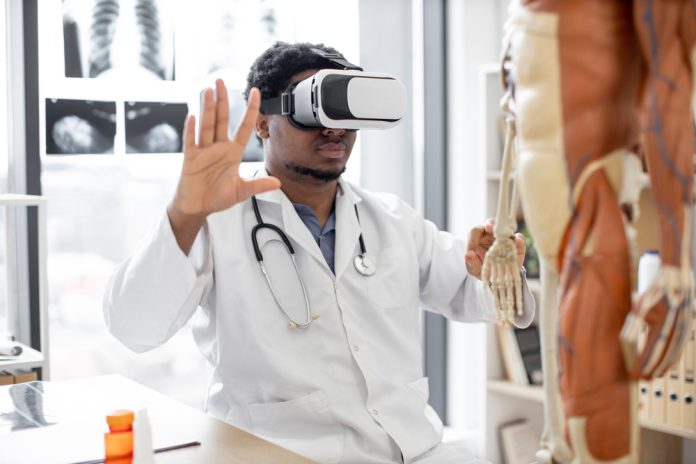
Advancing technology continuously offers new opportunities to support the outcomes of training programs. With more commercially accessible tools becoming available, virtual reality (VR) technology is increasingly easier to implement across industries. As the barrier of entry into the market lowers, competitive pricing paves the way for more organizations to adopt VR as a training solution.
Using VR solutions to drive successful training results requires leaders to carefully plan and conceptualize how the tool will work to support the needs of their specific industry and workforce. Before jumping on the trend, leaders should consider which solution is the right fit for their team and measure the benefits against potential drawbacks. The following considerations will support the successful implementation of VR tools for effective training programs.
Improving Training Outcomes Through Engagement
By incorporating immersive solutions like virtual reality, associates are more engaged in their learning and organizations see higher program completion rates. Studies show that VR helps trainees learn up to four times faster, retain more information, and feel 275 percent more confident in applying their skills.
VR works especially well when it comes to microlearning or breaking up courses into small doses. This training trend is designed to reduce learner fatigue and support retention by sectioning instruction into digestible sessions that each last less than 20 minutes. When trainees are able to gain hands-on experience through VR without feeling bombarded by new information, they are more capable of absorbing knowledge and using it effectively.
Identifying Opportunities to Enhance Training Efficiency
Beyond supporting team engagement, VR offers compelling alternatives to traditional training strategies. Instead of paying for travel and accommodations to facilitate training at a designated site, organizations can recreate spaces and allow associates to interact and experience a location through VR headsets from anywhere in the world.
For the healthcare industry, for example, VR can allow nurses and staff to experience walking through a hospital before stepping foot into the facility. This way, associates can gain familiarity in a controlled environment and practice navigating the hospital, finding necessary resources, and responding to situations effectively to build confidence for real-world applications. In a similar way, industries such as military operations and law enforcement can use VR to simulate an environment for trainees to react to hazards and dangerous situations in real time instead of learning on the job, when their actions have high-stakes consequences.
Understanding Proper Implementation Techniques
Industries are still in the early stages of incorporating VR into training and exploring its capabilities, and best practices are yet to be established. Because of this, using an integrated approach and developing a realistic timeline for implementation is essential.
While many people are excited about VR, only a small portion of the population has personal experience using it. Leaders need to prepare for the learning curve that comes with introducing unfamiliar technology to their employees. Those who have not used VR headsets before are at risk for side effects, such as cybersickness, which causes symptoms similar to motion sickness. Microlearning comes into play here in preventing new users from wearing VR headsets for long periods of time and developing side effects.
Leaders also should consider how the cost-saving opportunities of VR compare to the upfront cost of the VR hardware and software. As more companies offer VR tools, organizations will need to critically evaluate available options to ensure the tool is purposefully developed and offers the right features to provide value to the team.
Potential for Growth
Within the upcoming decade, VR has the potential for tremendous growth as an intuitive, engaging, and cost-effective training tool across industries. Allowing an opportunity for users to virtually experience new environments and interact with other team members as if they are in the same room will break down barriers and bolster communication to connect global teams. While VR is still a niche industry today, its reach is set to quickly expand to a wider audience, creating a need for industry leaders to carefully consider opportunities for its capabilities to support organizational needs and goals.

